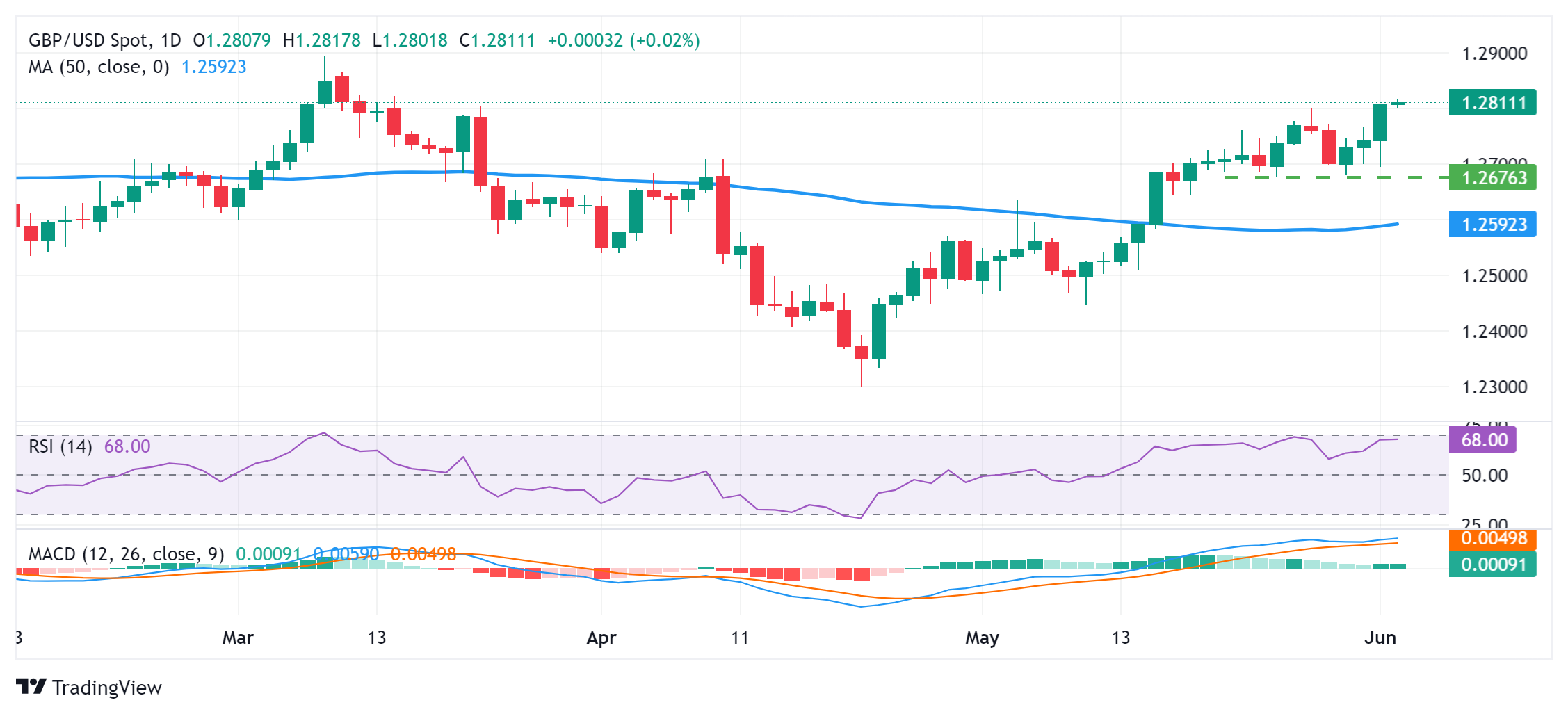GBP/USD Price Analysis: Bulls have the upper hand above 1.2800, highest since March
- GBP/USD struggles to capitalize on the move to a nearly three-month high set this Tuesday.
- Fed rate cut bets keep the USD bulls on the defensive and lend some support to the major.
- The technical setup validates the positive outlook and supports prospects for further gains.
The GBP/USD pair climbs to its highest level since March 14 during the Asian session on Tuesday, albeit struggles to capitalize on the move and is currently placed just above the 1.2800 mark. The near-term bias, meanwhile, seems tilted in favor of bullish traders in the wake of the prevalent selling bias surrounding the US Dollar (USD).
In fact, the USD Index (DXY), which tracks the Greenback against a basket of currencies, drops to a nearly two-month low on the back of rising bets for an imminent rate cut by the Federal Reserve (Fed), bolstered by Monday's disappointing US ISM PMI. Apart from this, expectations that the Bank of England (BoE) might keep interest rates at their current level for a little bit longer should underpin the British Pound (GBP) and validate the near-term positive outlook for the GBP/USD pair.
From a technical perspective, the overnight breakout through the 1.2800 mark could be seen as a fresh trigger for bullish traders. Moreover, oscillators on the daily chart have been gaining positive traction and are still away from being in the overbought territory. This, in turn, suggests that the path of least resistance for the GBP/USD pair is to the upside and supports prospects for a move to the 1.2855-1.2860 region en route to the 1.2900 neighborhood or the YTD peak touched in March.
On the flip side, weakness below the 1.2780-1.2775 immediate support might attract some buyers around the 1.2725-1.2720 area. This should help limit the downside for the GBP/USD pair near the 1.2700 mark. The latter should act as a key pivotal point, which if broken decisively should pave the way for a slide towards the next relevant support near mid-1.2600s. Spot prices might eventually drop to test the 50-day Simple Moving Average (SMA) support near the 1.2600-1.2595 region.
GBP/USD daily chart

